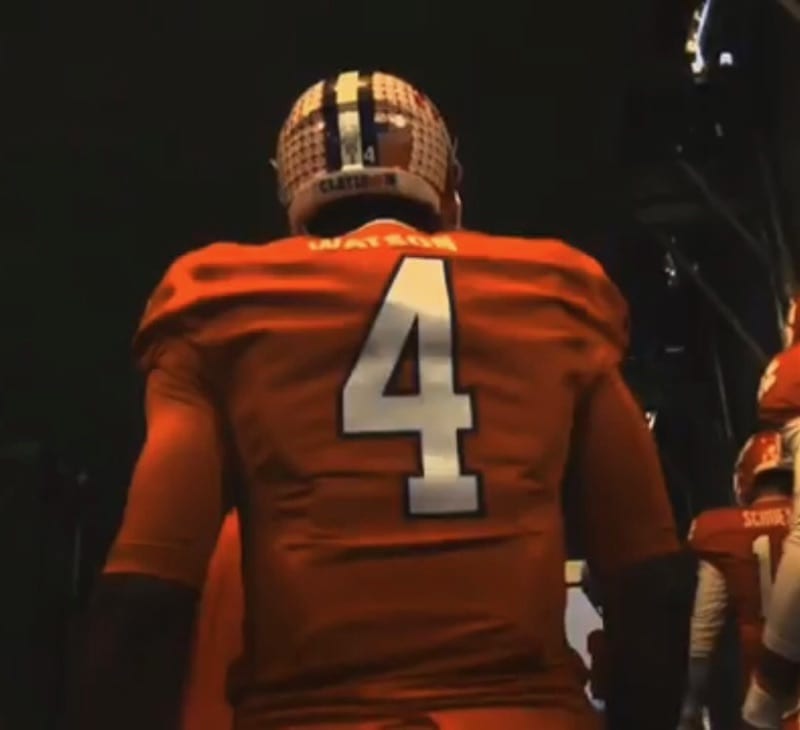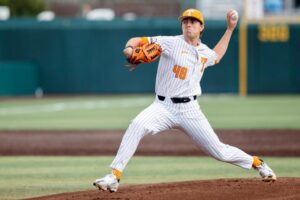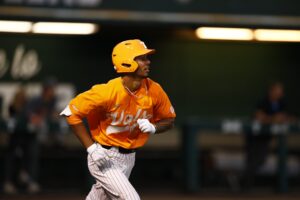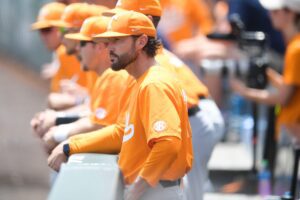Top Five Quarterbacks: Why should teams take them?
This year’s class of signal-callers isn’t the greatest, but it shows potential.

Image courtesy of the Highlight Zone, found via YouTube: https://www.youtube.com/watch?v=Frm1oeO2yu0
Through the years, there have been draft classes that have provided NFL teams with an embarrassment of riches to choose from when it comes to the quarterback position. The 1983 class saw six different quarterbacks taken in the first round, with names like John Elway, Dan Marino and Jim Kelly. However, there have also been draft classes that have provided much less at the quarterback position. The 2013 draft saw only EJ Maunel and Geno Smith taken early on.
This year’s class certainly isn’t on the level of the 1983 class, but it also isn’t as bad as the 2013 either. There is some potential with the top five quarterbacks in this class, but the likelihood of any of them going in the first ten picks is unlikely. Here is the case for why each of the top five signal callers should and should not be taken.
Mitchell Trubisky, North Carolina
Many people called for Trubisky to stay in Chapel Hill for his senior season in order to improve his draft stock. However, he decided to leave a year early, and it turns out that he is the best quarterback prospect in this draft. Trubisky had some impressive stats during his junior season, albeit against some weaker secondaries. He completed 69 percent of his passes for 3,748 yards and 30 touchdowns.
As good as those numbers were, the best thing he did last season was throw just six interceptions. He commands the pocket well and has an above-average arm. He also has the ability to move out of the pocket and scramble when necessary. The concern over Trubisky is his lack of experience. He held the starting job at North Carolina for only one season after being a backup during his first two seasons. The grades on him after the combine have varied, but it seems most teams are willing to take a chance on his skill set despite the lack of experience. It’s even been rumored that the Browns have mulled over Trubisky with the first pick.
Deshaun Watson, Clemson
For college players like Watson, the question has been asked before: do winning ways automatically transfer over to the NFL? We’ve seen cases of both in past drafts. 2010 Heisman Trophy winner Cam Newton has gone onto some major success in the NFL, winning an MVP award along the way. But then there have been guys like Tim Tebow, who didn’t translate well to the NFL after being a winner in college. So why will Watson be any different?
The skill set is there for Watson to have potential. His accuracy on the deep ball is probably the best in this entire class. He was given a good deal of freedom in Clemson’s offense to make decisions on his own, so he’s shown the ability to read a defense. However, the decision-making of Watson was questioned a bit. He threw 17 interceptions this past season, which was way too many. He has drawn comparisons to Dak Prescott, but Dak came into the league as a much more accurate quarterback. Watson will need to calm it down with the decision-making, but he has one redeeming quality that might give him an edge over others, and that is his ability to come through in the clutch.
DeShone Kizer, Notre Dame
Based on physical tools alone, Kizer is the best at the position in the class. Physically, he compares very well to Panthers quarterback Cam Newton. He has good touch on downfield passes and an ability to make plays with his legs when the need arises. Kizer threw 26 touchdowns with nine interceptions on the season. He’s flown under the radar a bit in this class behind guys like Trubisky and Watson. The knock on Kizer is that he simply isn’t consistent enough. He had some brilliant performances last season, like the shootout against Texas. But he also had games that left scouts scratching their heads, such as the loss against Stanford, where he was benched. With a much weaker supporting cast this past season, Kizer led Notre Dame to a 4-8 record. He will need to be surrounded with a good supporting in the league if he is going to be successful.
Davis Webb, California
When it came to pro prospects at the position, Kliff Kingsbury had an embarrassment of riches for a while. The former Texas Tech star turned Cal Golden Bear has seen a surge up draft boards since the combine. He threw for 4,295 yards and 37 touchdowns in his lone season at Cal. Webb transferred out west after losing the starting job in Lubbock to fellow draft member Patrick Mahomes. Webb stands in the pocket well and has some nice rhythm to his throws. Because of the offenses he played in at both schools, he had to adapt to standing in the pocket and being able to throw crossing routes with accuracy. However, the product of each offense has shown Webb’s weaknesses as well. At times, it seemed like his decision on where to throw was often made before the ball was even snapped. A few of his interceptions were based off not being aware of the defensive backs. Webb has potential, but he’ll need to move past the run & gun offense he came from.
Patrick Mahomes, Texas Tech
Mahomes is another quarterback that declared early. He took over the starting job at Texas Tech, which forced Davis Webb to transfer. Mahomes’ stat line was gaudy last season, throwing for 5,052 yards and 41 touchdowns.
Watching his film, he has an undeniable swagger to him every time he steps out on the field. As for his skill set, his arm may be the best in the draft. He has the ability to throw deep to either side of the field. However, he is also someone you have concerns over because of his college offense. Like Webb, Mahomes came from an offense that used a lot of pre-determination. The difference in Mahomes and Webb, however, is that Mahomes would not always play within the offense. His gunslinger mentality would sometimes get him into trouble when he would force throws that just weren’t there. Mahomes also does not have as much experience, and NFL teams will need to see that he can play disciplined and composed.
Edited by Robert Hughes
Featured image courtesy of The HIGHLIGHT Zone



